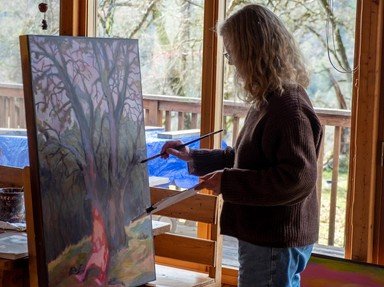Quiz Answer Key and Fun Facts
1. This Native American honored with a place setting at "The Dinner Party" lived c. 1786-1812. Her son, pictured with her in a US government engraving, was born in 1805.
2. Caroline Herschel, who lived from 1750-1848, is included at "The Dinner Party" for her contribution to which of the following fields of endeavor?
3. For what accomplishments is Mary Wollstonecraft (1759-1797) accorded a place at "The Dinner Party"?
4. Probably the most-reproduced (on posters and postcards) plate from "The Dinner Party" is that of Sojourner Truth (1797-1883). Which of these facts about Sojourner Truth and her inclusion in "The Dinner Party" is TRUE?
5. The words "Independence Is Achieved by Unity" appear on what part of "The Dinner Party" place setting honoring Susan B. Anthony?
6. Each of these remarkable women is honored at "The Dinner Party". Three appear as names on the Heritage Floor. Which woman has a place setting at the artwork table?
7. Emily Dickinson's place setting is one of the most controversial in "The Dinner Party". What does Emily's plate look like?
8. A review of "The Dinner Party" in the publication "The Village Voice" stated that Margaret Sanger's place setting was "a bloody mess, evocative of one too many surgeries". What is a likely reason for the artist's choice of red for Ms. Sanger's plate?
9. This writer, who lived from 1882-1941, felt that women's voices were shockingly underrepresented in literature. (We may surmise that she spent hours in a room of her own ...)
10. The final place setting at "The Dinner Party" is that of artist Georgia O'Keeffe (1887-1986). Although she is best-known for her paintings of flowers, her "Dinner Party" plate resembles which of her other frequently-appearing themes?
Source: Author
LilahDeDah
This quiz was reviewed by FunTrivia editor
bloomsby before going online.
Any errors found in FunTrivia content are routinely corrected through our feedback system.
